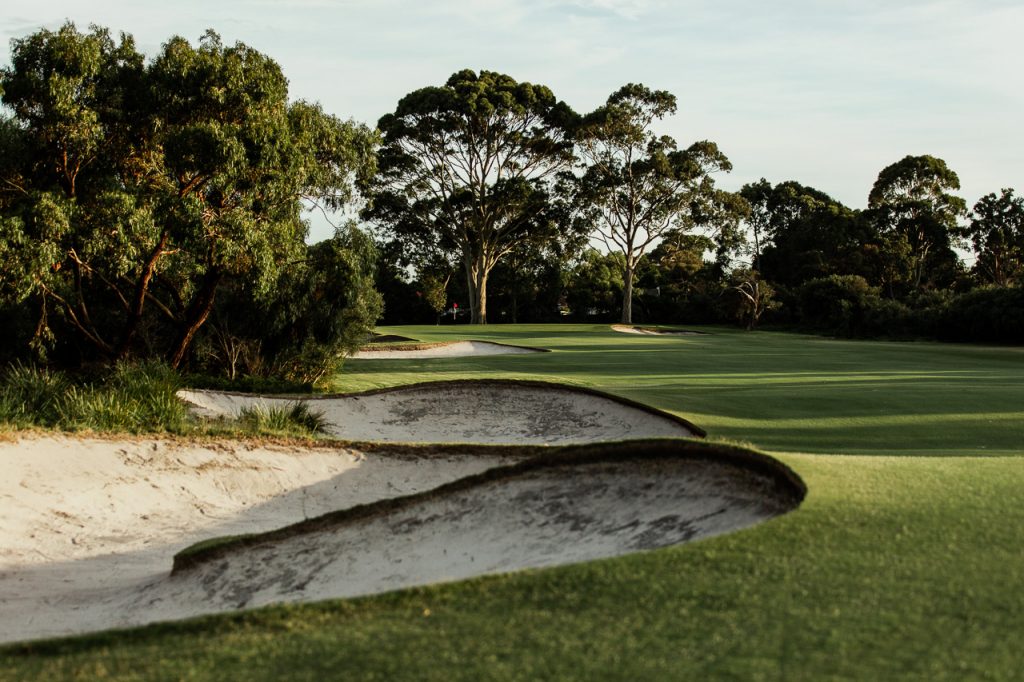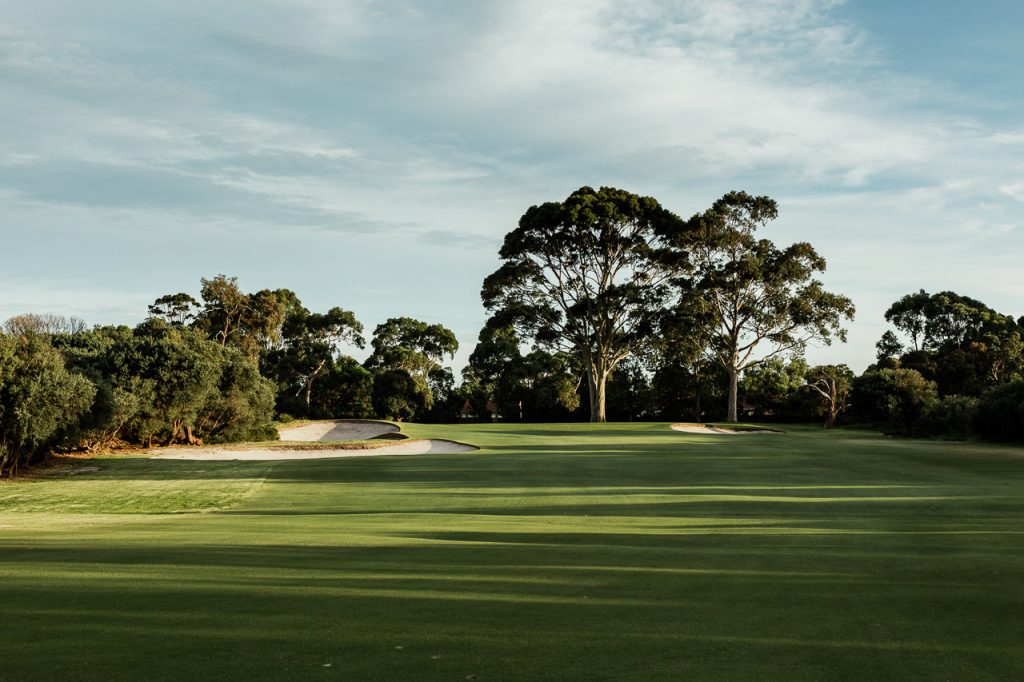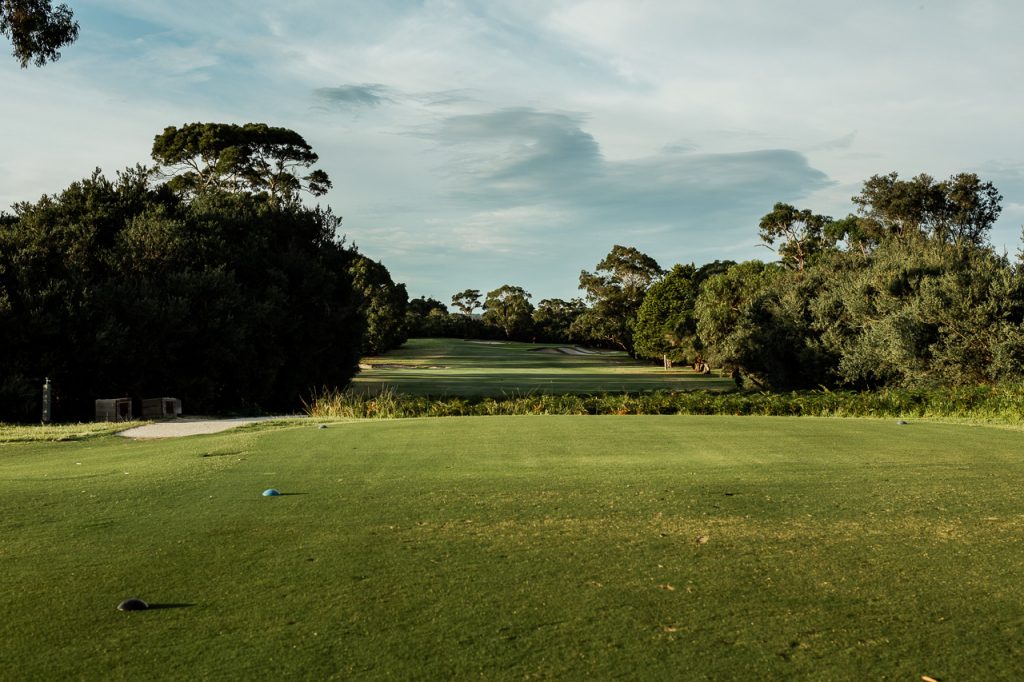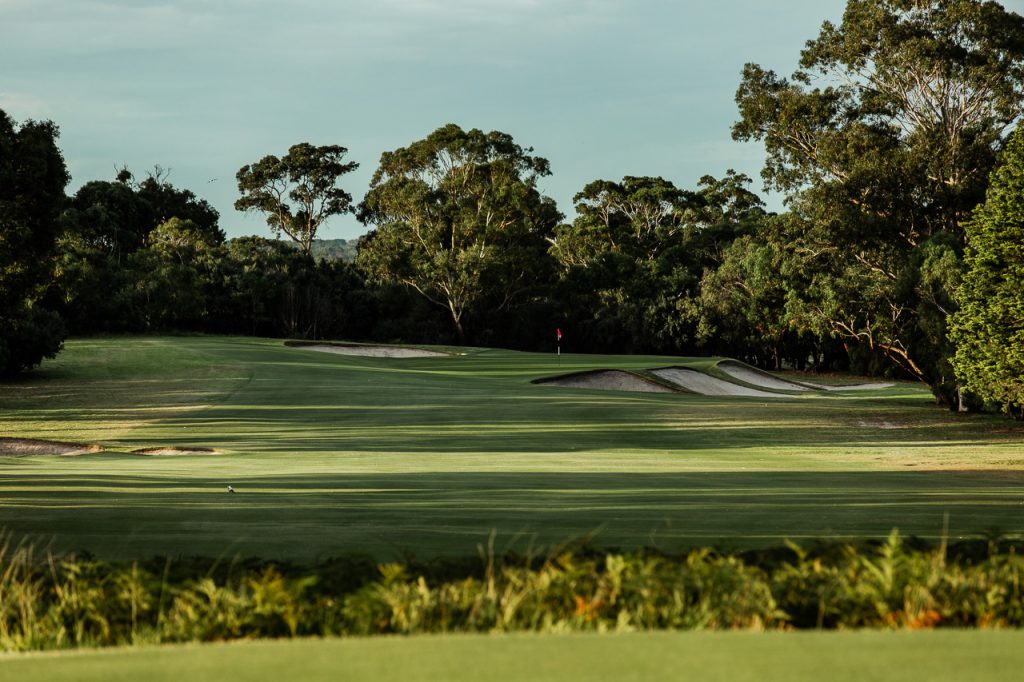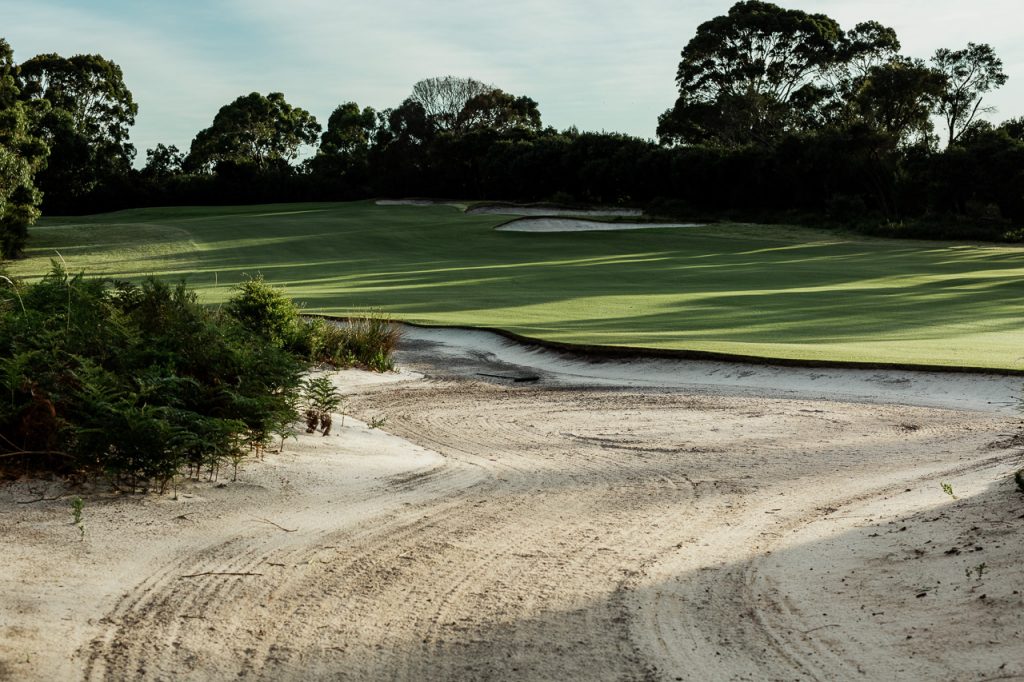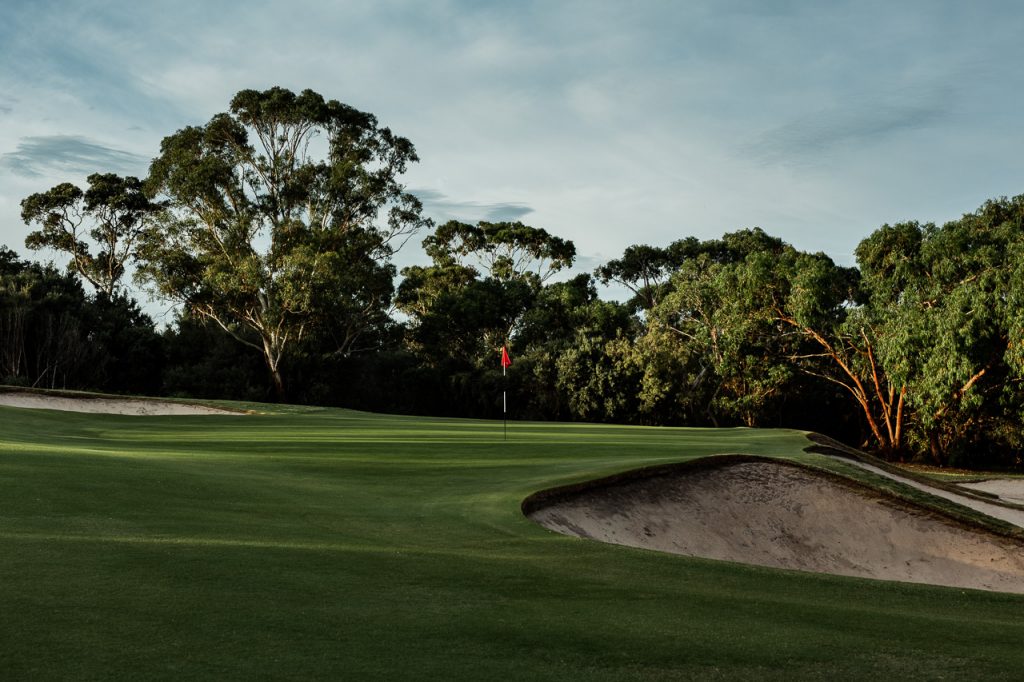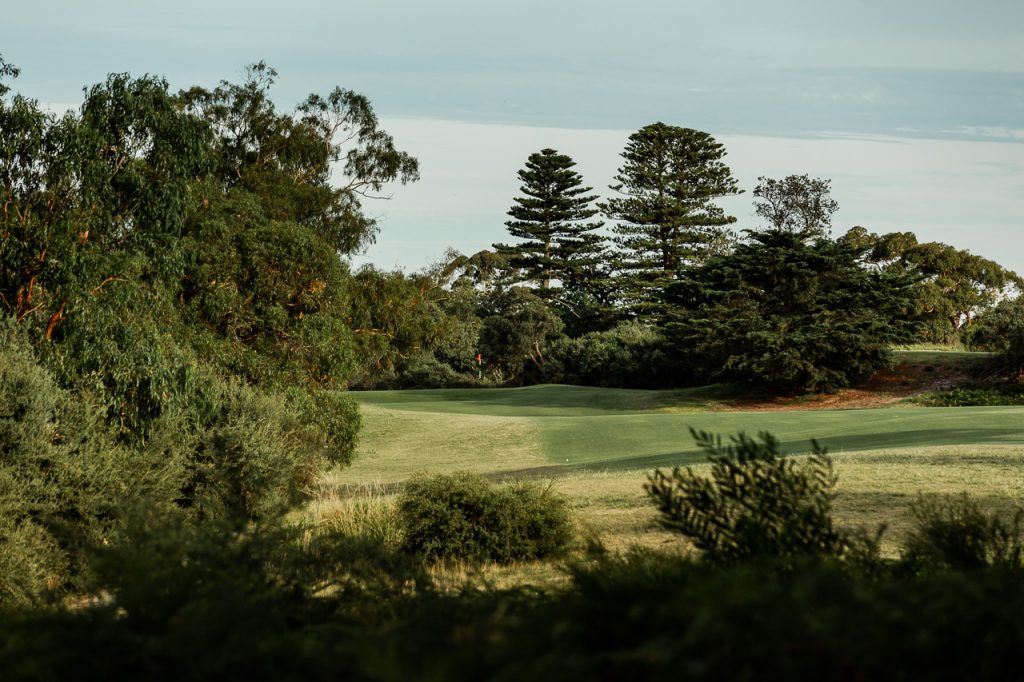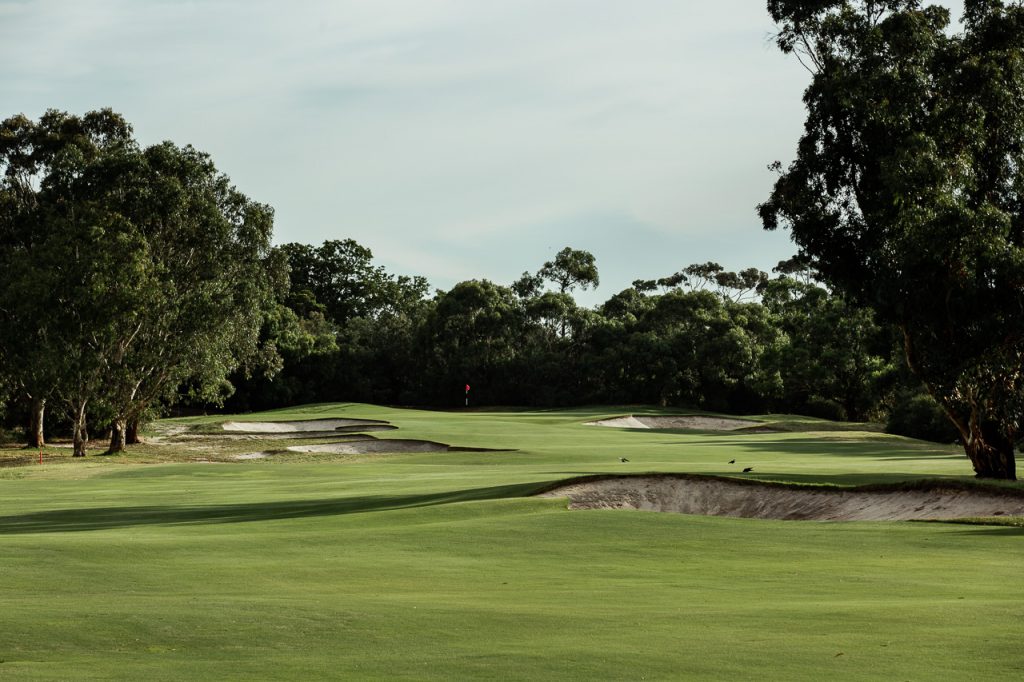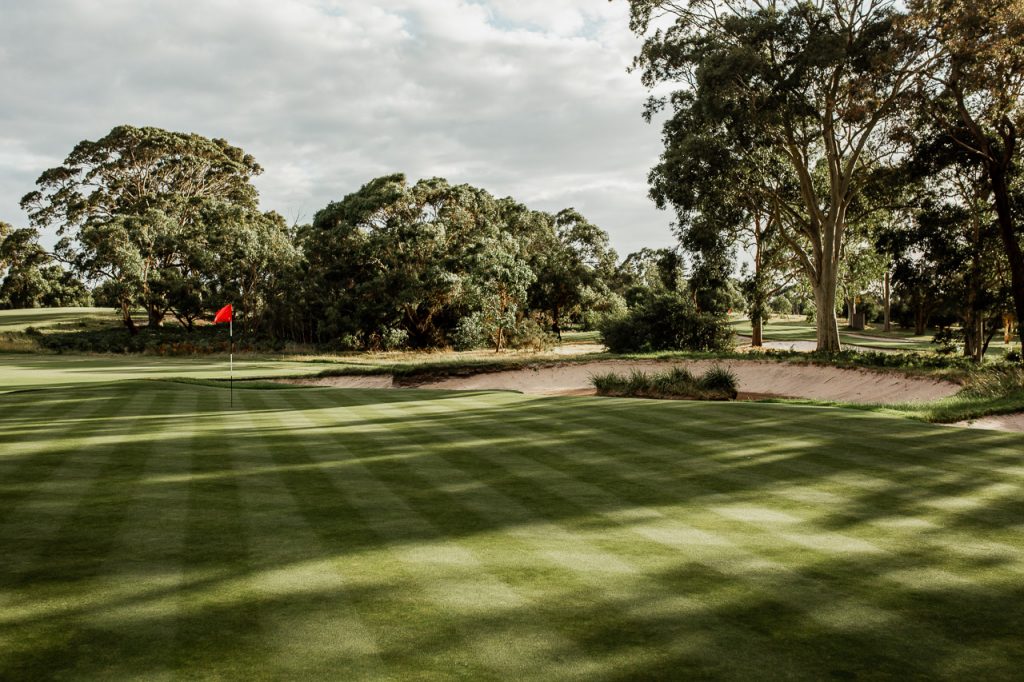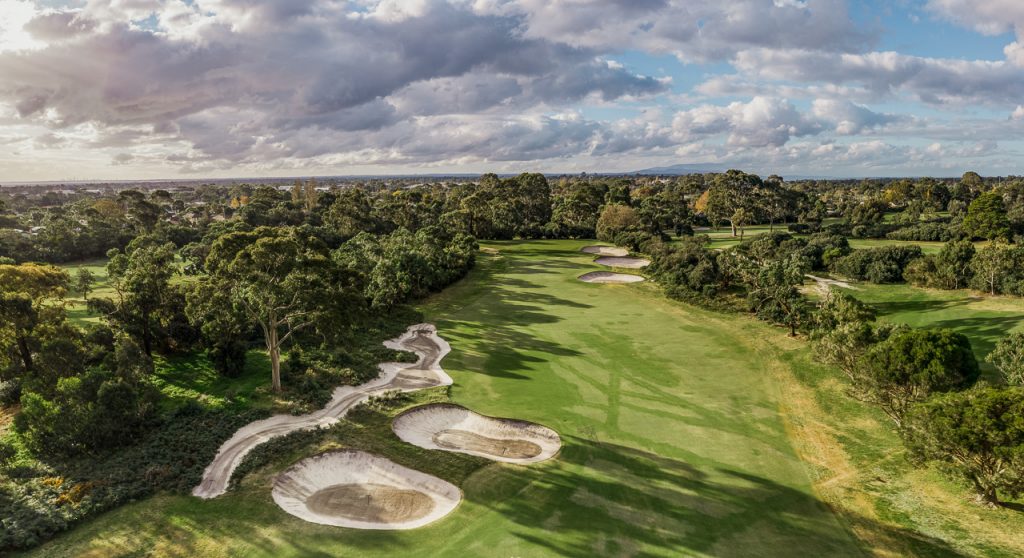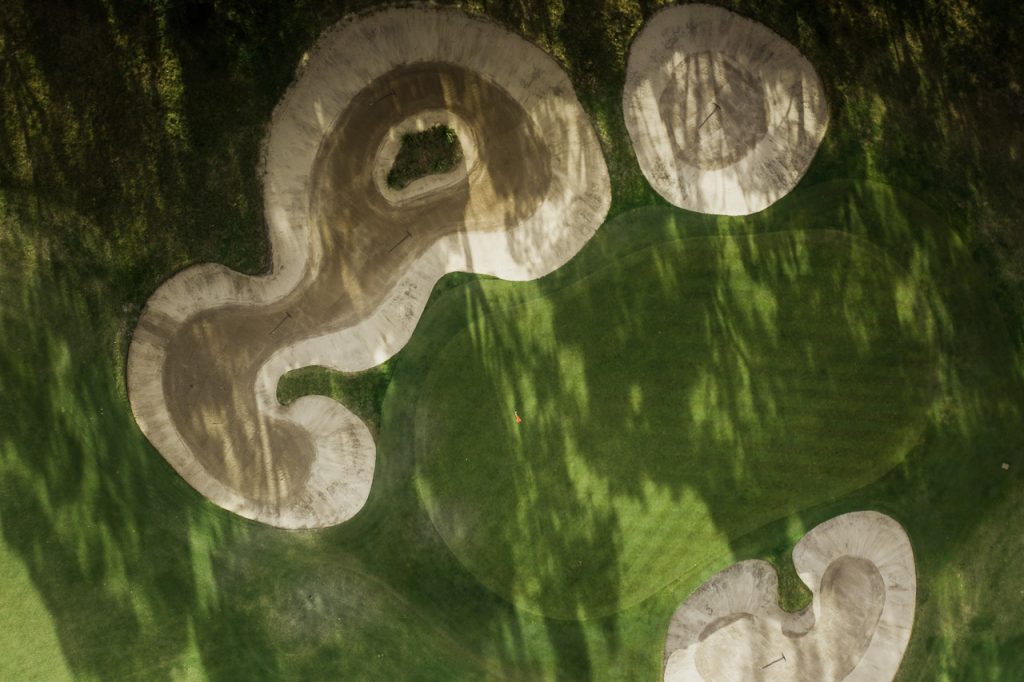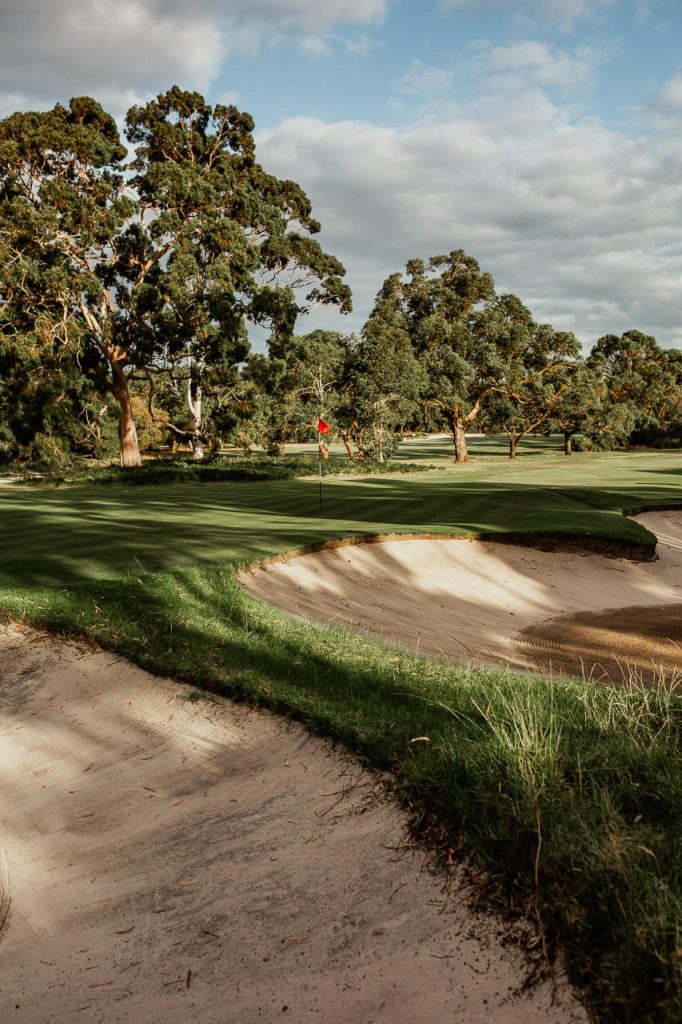The Long Island feature video
About the Course
Designed by British architect, Gordon Oliver, Long Island is considered by many to be the hidden gem on Melbourne’s sandbelt. A challenging layout, the course has built its reputation on the quality of its greens.
Long Island – The Breakdown
Long Island – 1st Hole
Par-4 10 18
327m 328m 348m 358m
A good starting hole with a slight veer to the right and wide landing area for your drive helps to settle the first tee nerves. The second shot is where most golfers find trouble as the green has a deceptive amount of slope from right to left and is surrounded by strategic bunkering.

Long Island – 2nd Hole
Par-4 2 8
334m 339m 343m 353m
The drive needs to be directed down the right side as the slope on landing will tend to drag the ball towards the fairway bunker on the left. The second shot into the green should be played more to the left centre as anything right tends to run off the green leaving a tricky chip.
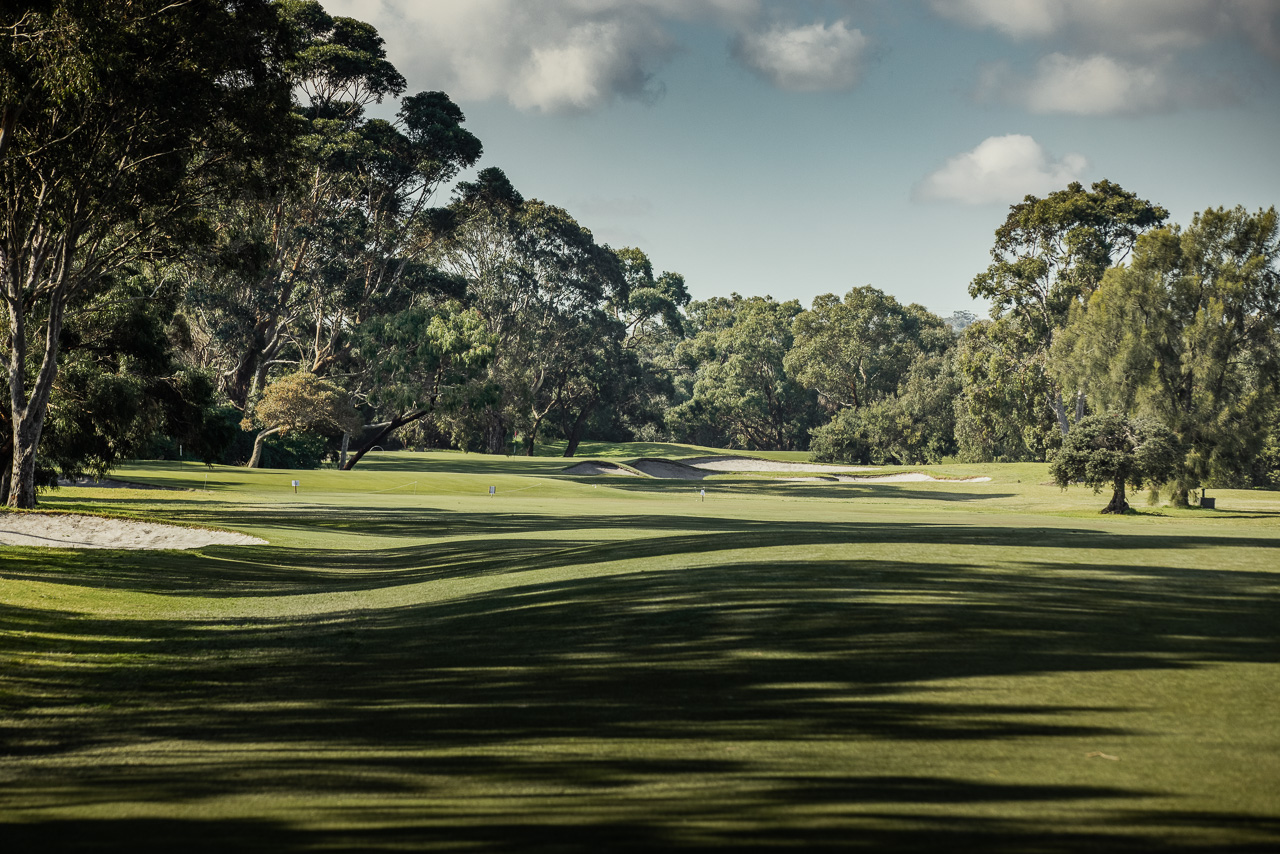
Long Island – 3rd Hole
Par-3 1 12
137m 135m 167m 189m
The 3rd is a striking par 3 surrounded by elaborate bunkering that will test the best short-game player. Depending on the pin, the stronger hitters may want to aim more to the centre of the green and allow the natural slope move the ball to the right. For those who want to take the lower route, there is an opening at the front left which will leave you in a great position to attack the flag with your next shot.
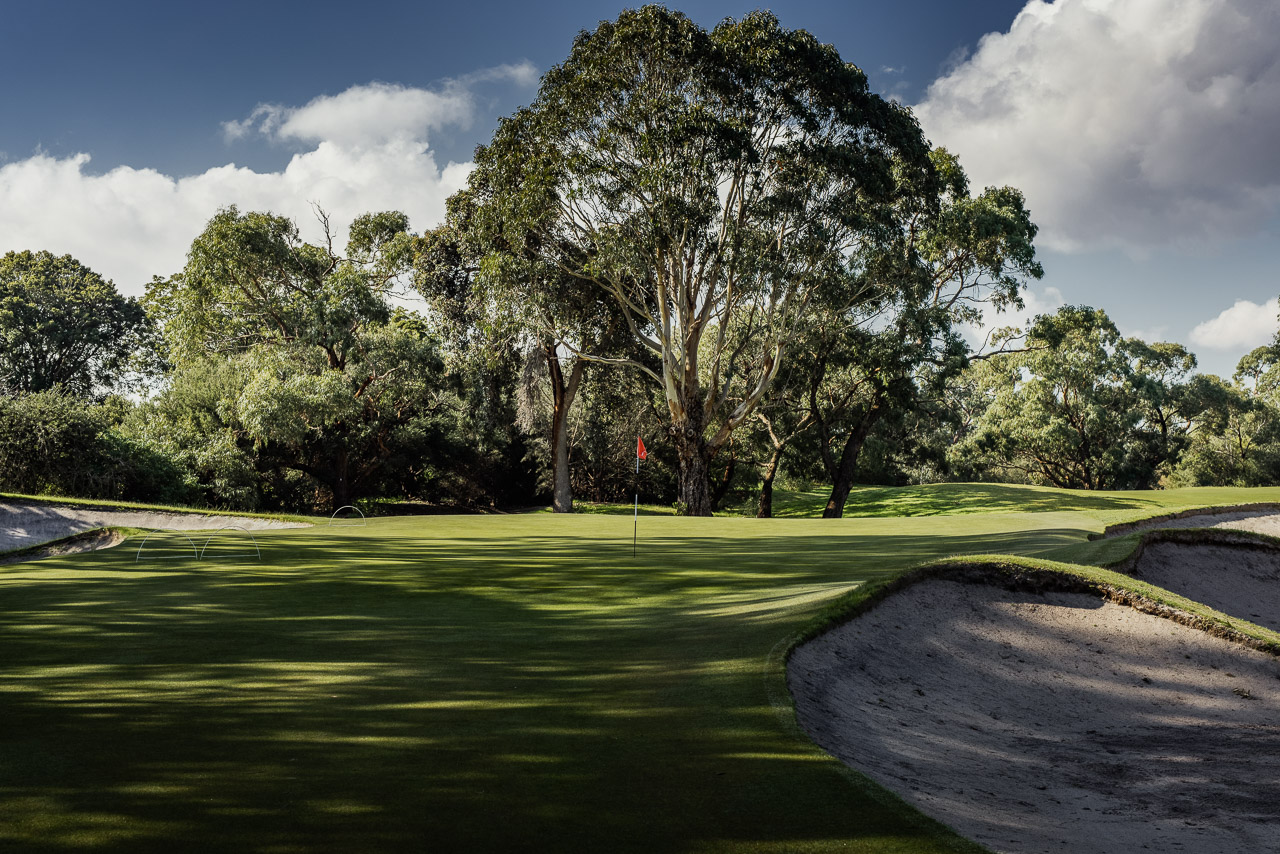
Long Island – 4th Hole
Par-5 9 3
447m 453m 502m 528m
Hole 4 is a solid par 5 where a well-struck tee shot down the middle, splitting the bunkers, amounts to an ideal start. For the majority of golfers who can’t make the green in two, the second shot should be aimed down the right side to the left of the fairway bunker. From that position, players tend to have a better angle to the green for most pin placements.
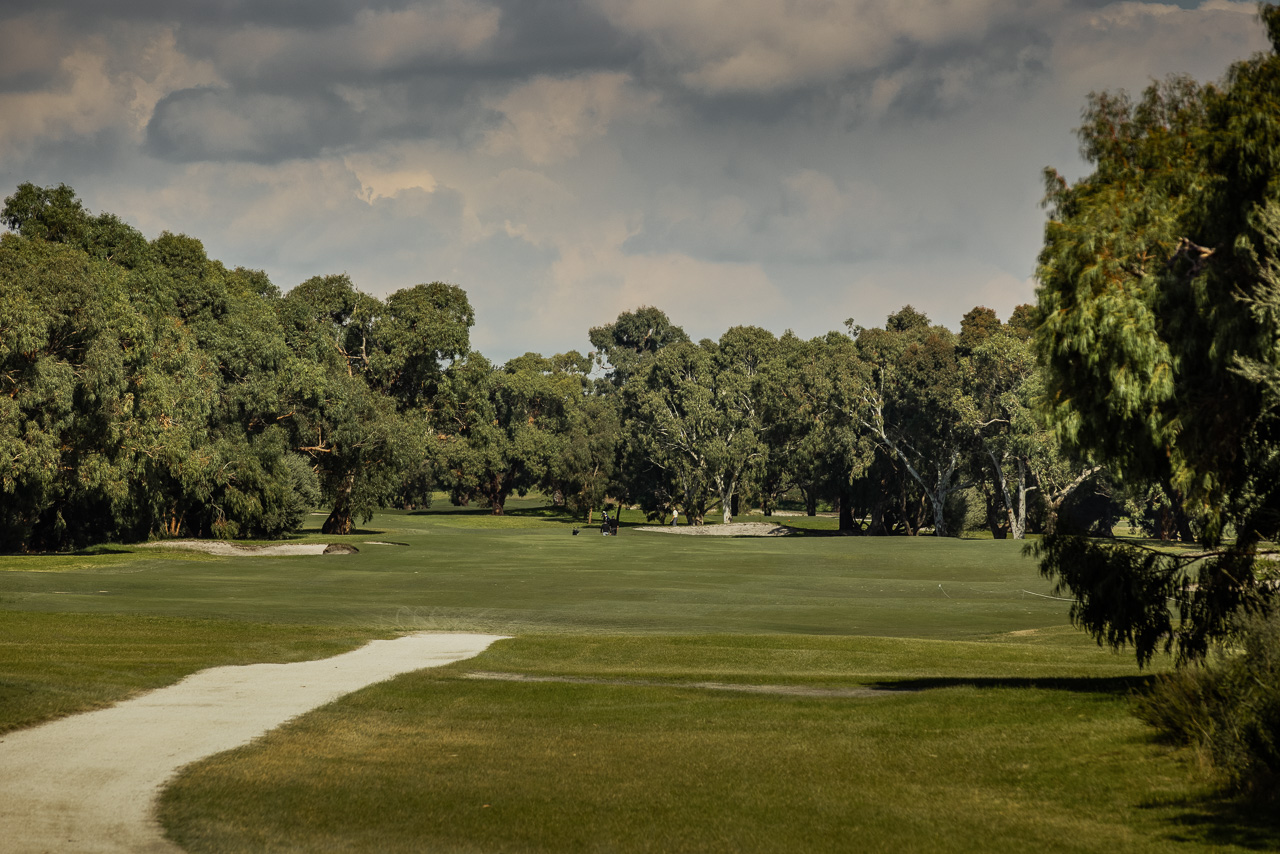
Long Island – 5th Hole
Par-5 13 14
271m 274m 451m 467m
Consecutive par 5s set up the opportunity for early gains. The fairway is lined by thick tea tree and gums on both sides, demanding a straight drive. The green is nestled in on the left and protected by trees. The ideal approach is from the right side of the fairway where bunkers will often force a shorter lay-up than is ideal. Once on the putting surface the general slope of the green is from right to left.
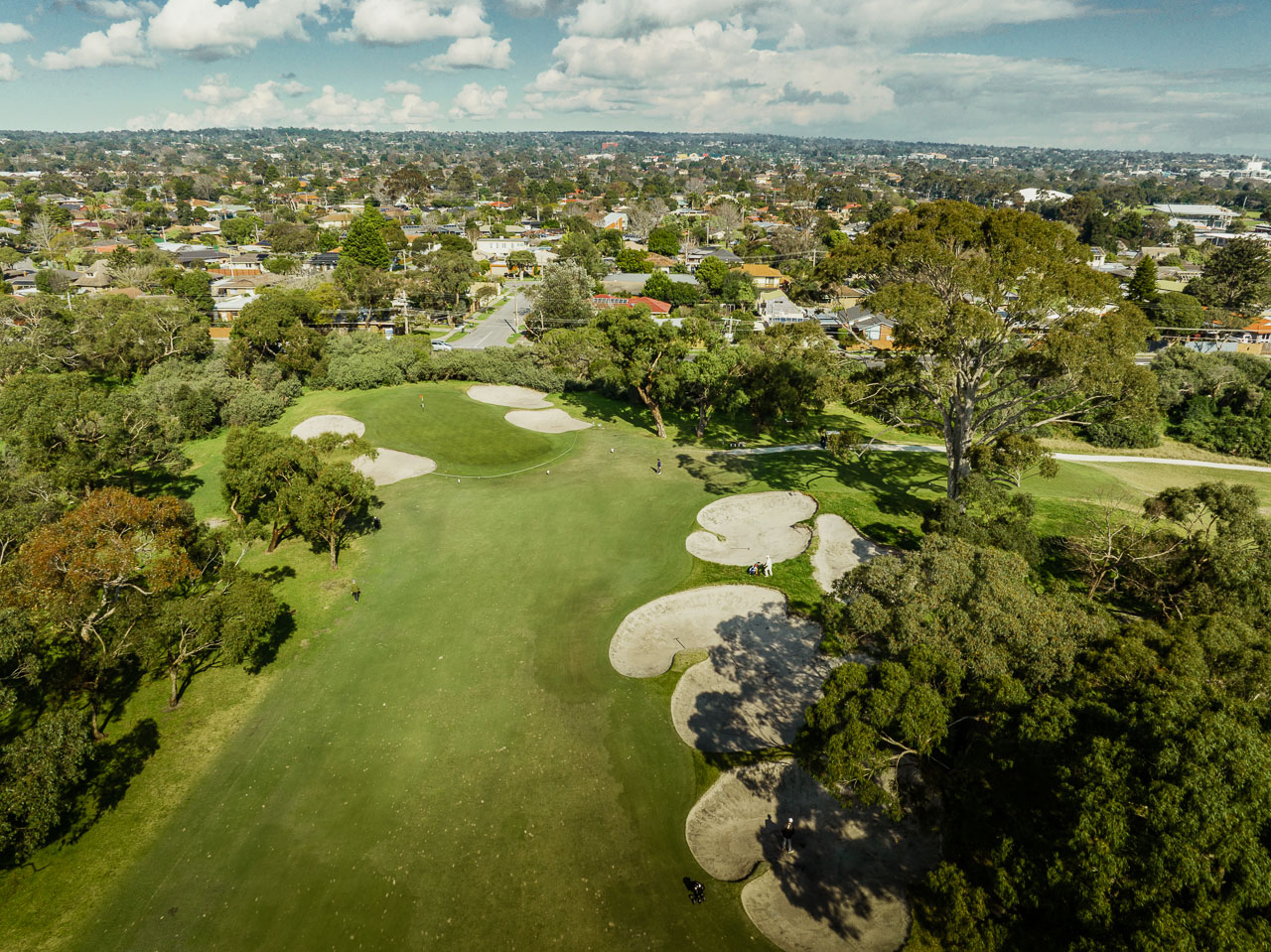
Long Island – 6th Hole
Par-4 11 6
382m 380m 379m 394m
Hole 6 requires a strong tee shot down the left centre of the fairway as anything to the right tends to run into the tree line. The second shot will typically require a low iron or rescue into a green that is shaped like an upside down saucer. Any shots to the left or right edges of the green tend to find their way into the greenside bunkers.
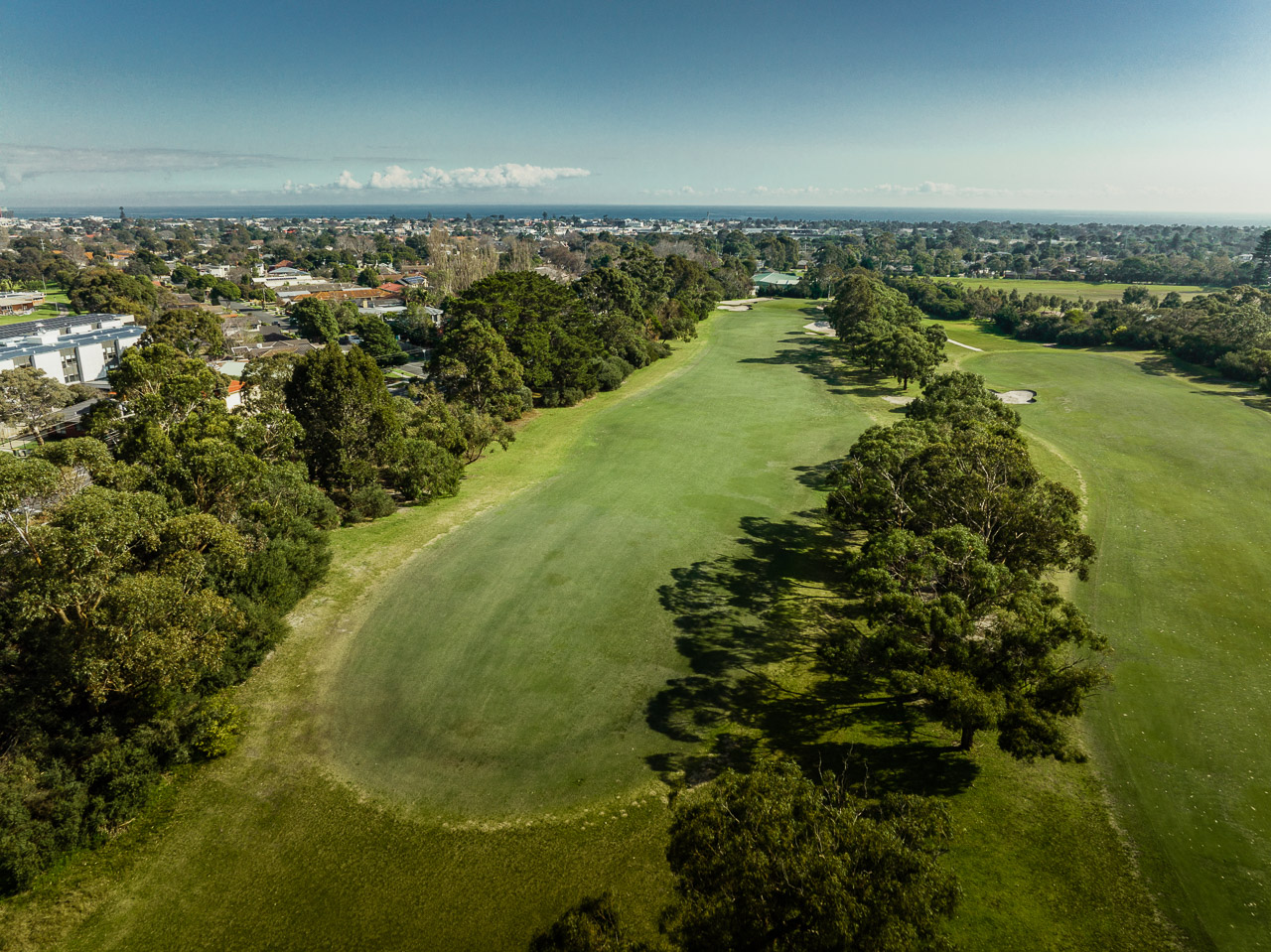
Long Island – 7th Hole
Par-4 17 10
358m 363m 398m 413m
Hole 7 is a slight dog-leg to the right with the turning point of the fairway guarded by a perfectly placed fairway bunker. Longer hitters will be able to fly the bunker, leaving them with a short iron in, while the shorter hitters should play down the left centre of the fairway, feeding back to the right off a gradual slope. Second shots into the green always tend to play a half or full club longer than would be expected as the slope from front to back is quite pronounced.
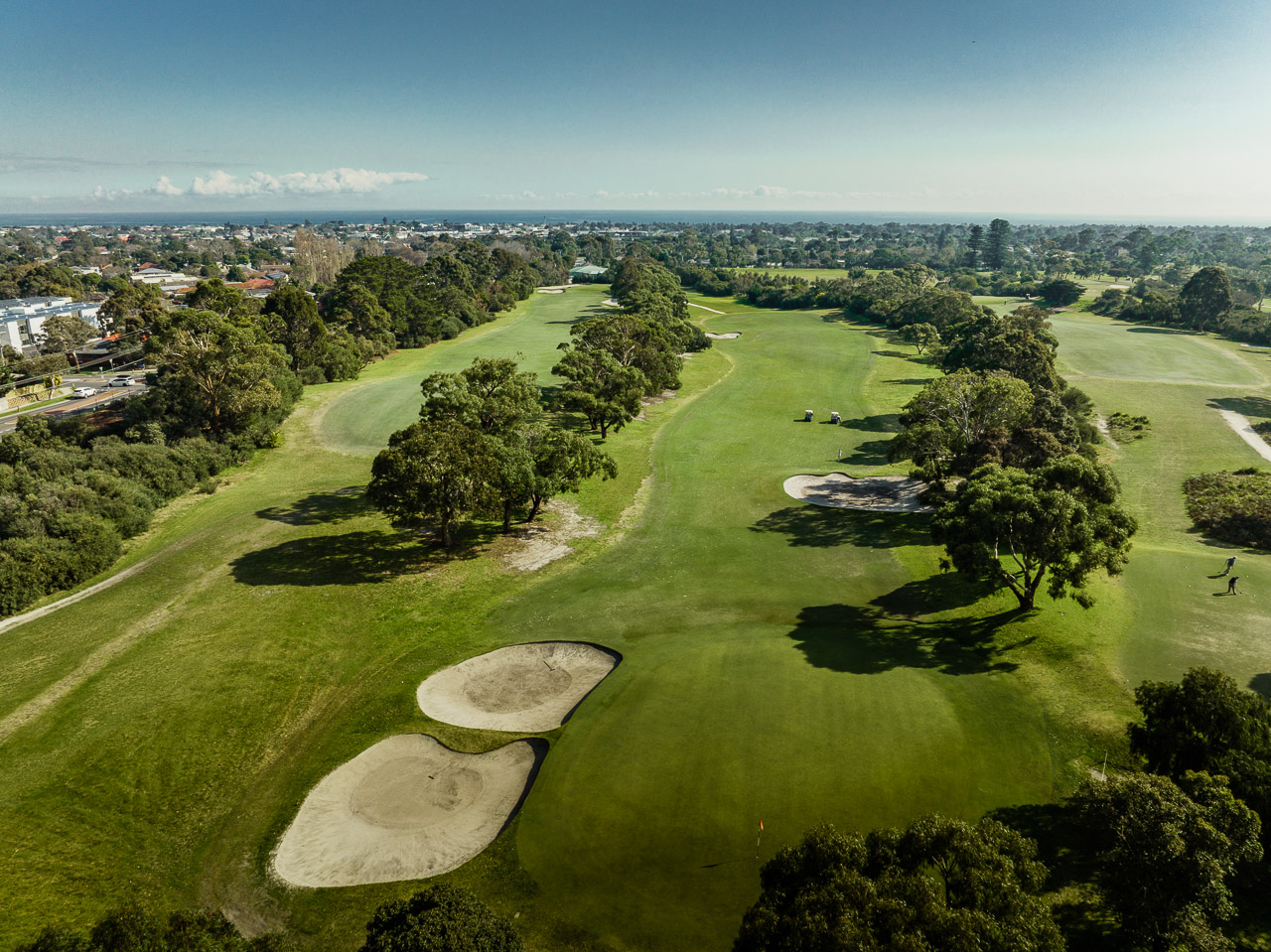
Long Island – 8th Hole
Par-4 15 1
294m 296m 302m 314m
This is a signature hole that requires a well struck tee shot down the middle of the ‘Hog’s Back’. Longer hitters may wish to play an iron as it will leave them with a better view of the green to play for their second shot. The approach shot needs to err to the right hand side of the green as it has a severe slope to the left. Club selection for the second shot must be accurate or the ball will find the bunker short and left or end up over the back of the green.
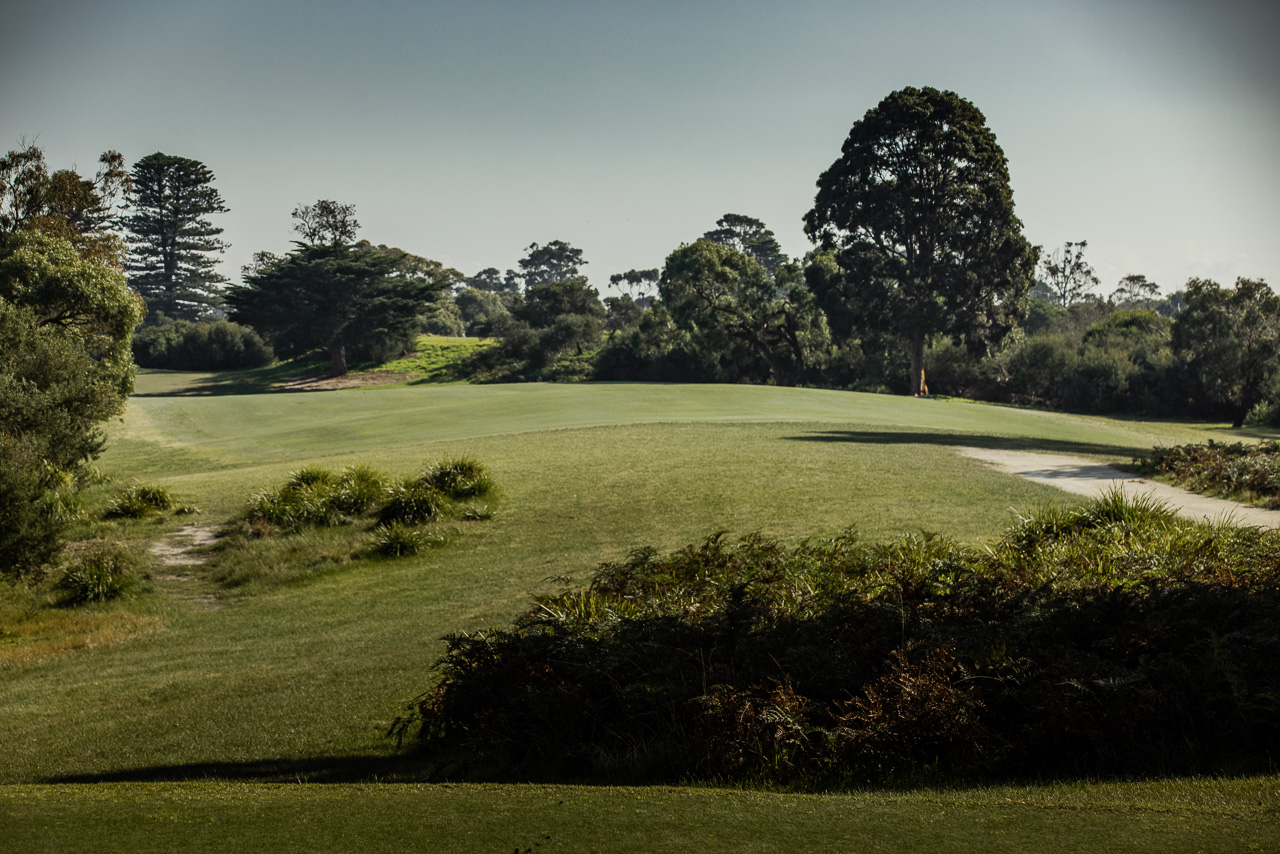
Long Island – 9th Hole
Par-3 4 16
111m 115m 122m 134m
The 9th is played from an elevated tee to a fast and sloping green that moves from right to left. From front to back the green may play as much as a 4 club variance depending on pin position and wind direction. The green is surrounded by perfectly placed bunkers that would test anyone’s short game.

Long Island – 10th Hole
Par-4 12 5
270m 270m 338m 352m
Hole 10 is a dog-leg left par 4 which requires a tee shot to either the crest of the hill in the middle or, for the really long hitters, one which takes on the corner. A draw off the tee, starting on line with centre fairway, will find its way to the flat, but anything further right is likely to run out of fairway or bring the rough/trees on the right into play. The second shot into the green requires good yardage control as you must carry the bunker to the front left of the green. The shorter hitters may opt to play to short right of the green towards the opening and have a nice angle at the flagstick with a chip or pitch. The green slopes from back to front and has a generous landing area.
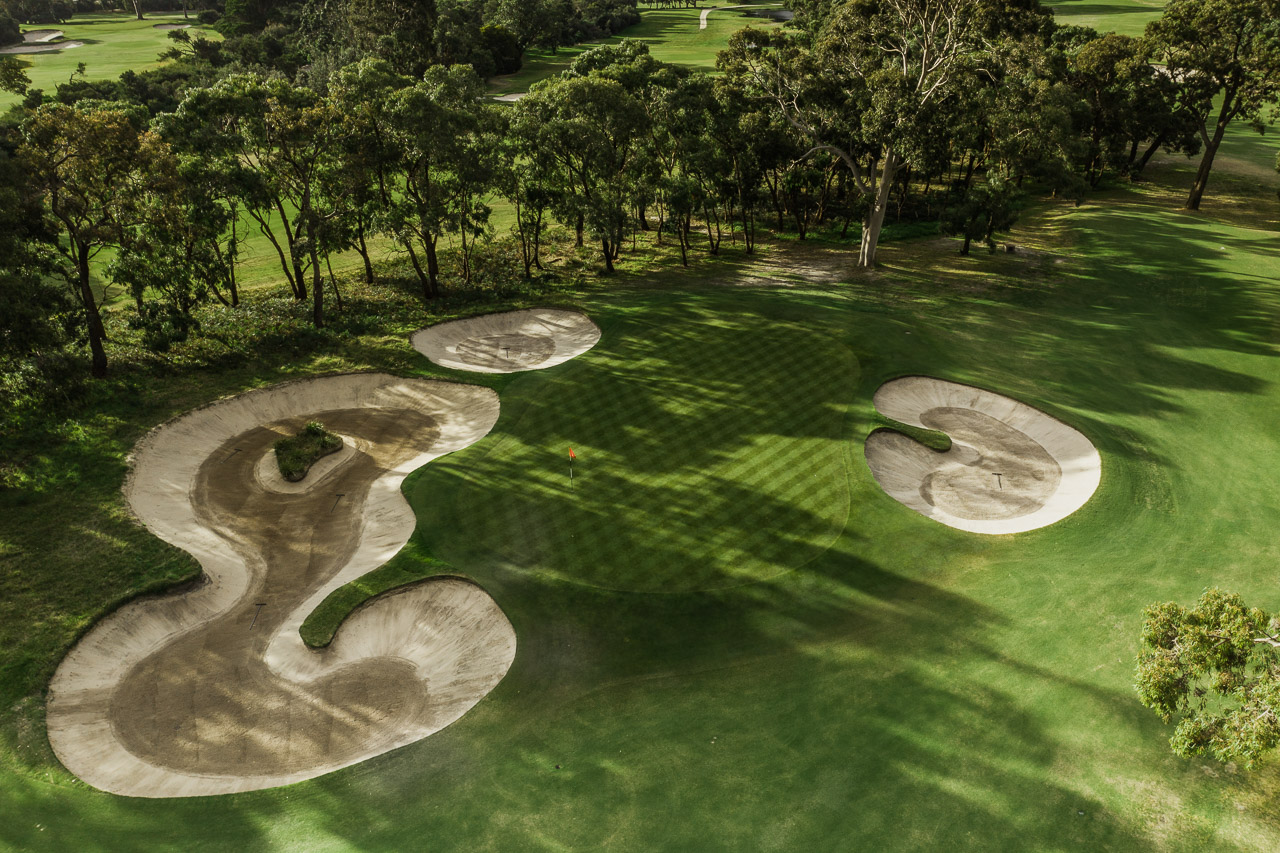
Long Island – 11th Hole
Par-4 10 11
305m 304m 326m 338m
The 11th is not a long Par 4 but it does require an accurate tee shot down the middle, avoiding the fairway bunkers on the left and right. The second shot plays to a green which slopes from right to left. Playing for the right centre of the green is advised as any recovery from the back of the green can be tricky if the approach happens to go too long.
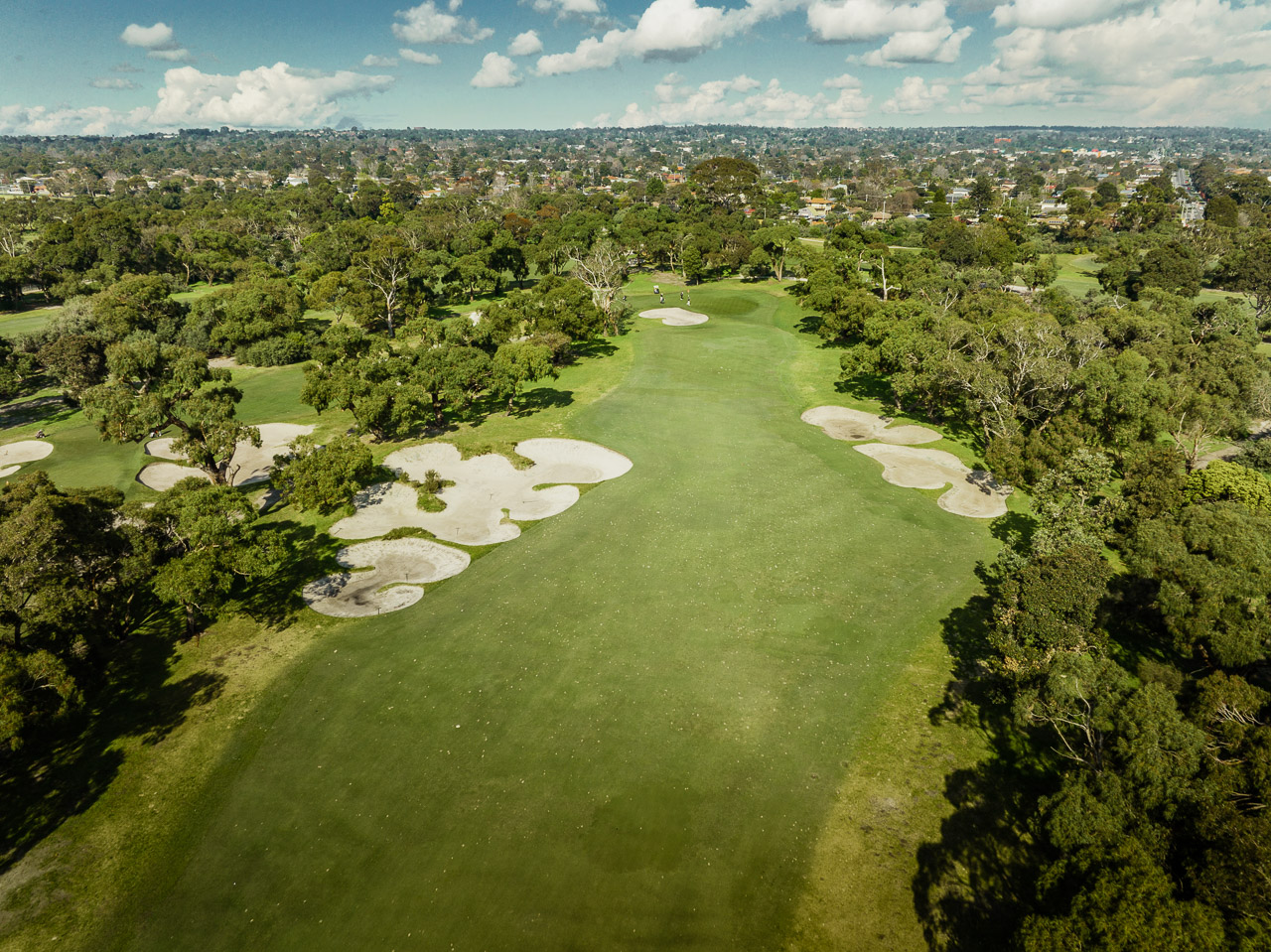
Long Island – 12th Hole
Par-3 18 2
120m 123m 131m 144m
The 12th is a challenging par 3, despite being a relatively short hole. It is surrounded by bunkers lying in wait for any mishit tee shots. On most occasions the hole tends to play into the wind and as a result many golfers end up in the traps. It always helps to take a little more club than normal when the pin is in the middle or towards the back of the green.

Long Island – 13th Hole
Par-5 6 15
443m 451m 467m 479m
Hole 13 has a very slight turn to the right and it’s only the longer hitters that can carry the bunker on the right corner. For most golfers aiming their tee shots down the left centre of the fairway will yield a better result. The second shot for the average golfers should be placed down the middle as going left brings the fairway bunkers into play. The green is relatively flat, but requires good distance control with the approach shot.
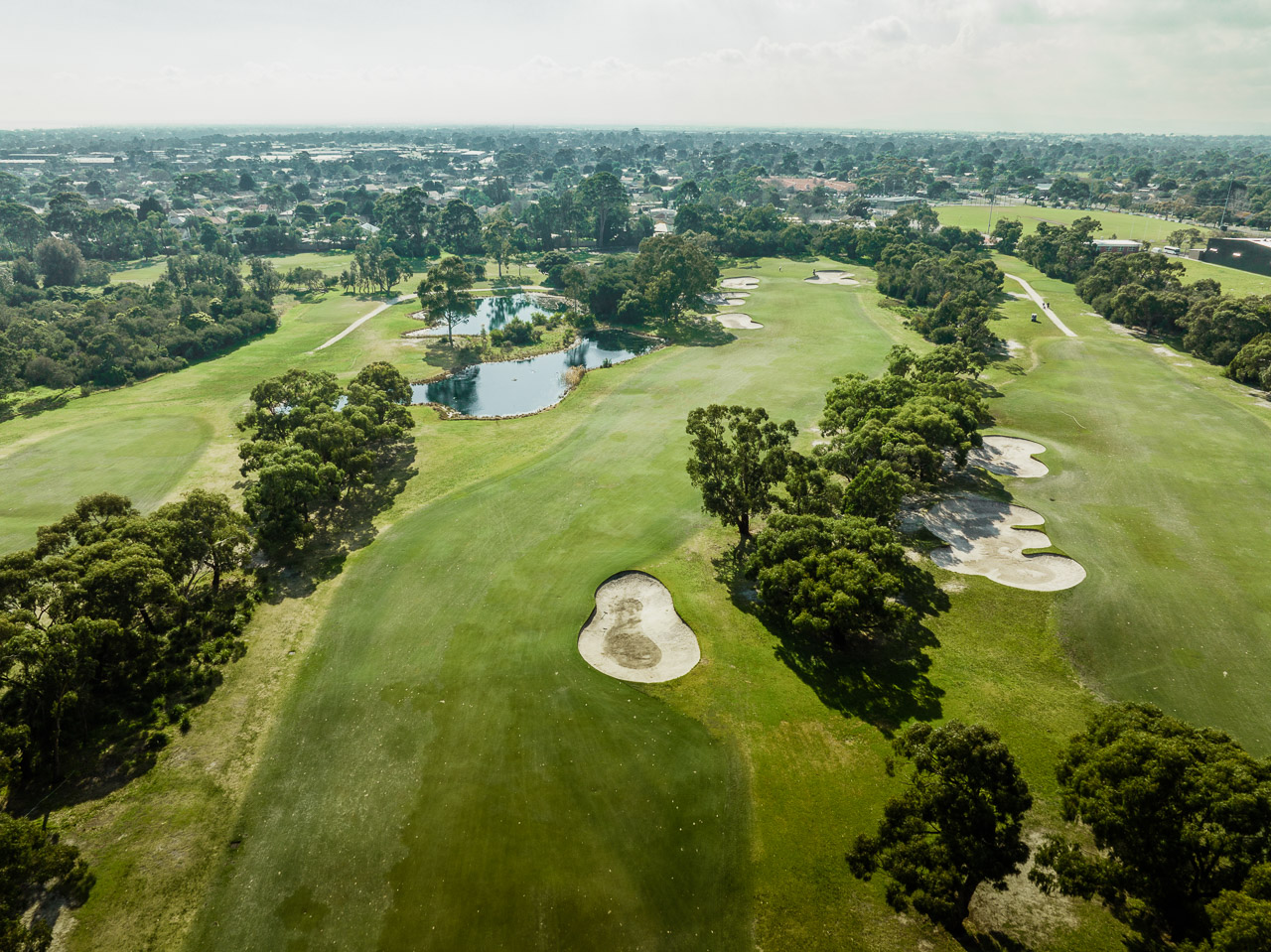
Long Island – 14th Hole
Par-4 3 7
325m 337m 343m 380m
Hole 14 is a slight dog-leg from left to right where the average golfers is advised to hit down the left side of the fairway and leave the carry of the bunker on the right to the bigger hitters. The green is guarded by bunkers on the left and right, but still has a generous landing space towards the front. The green itself is another upside down saucer so distance control is critical for those seeking par.
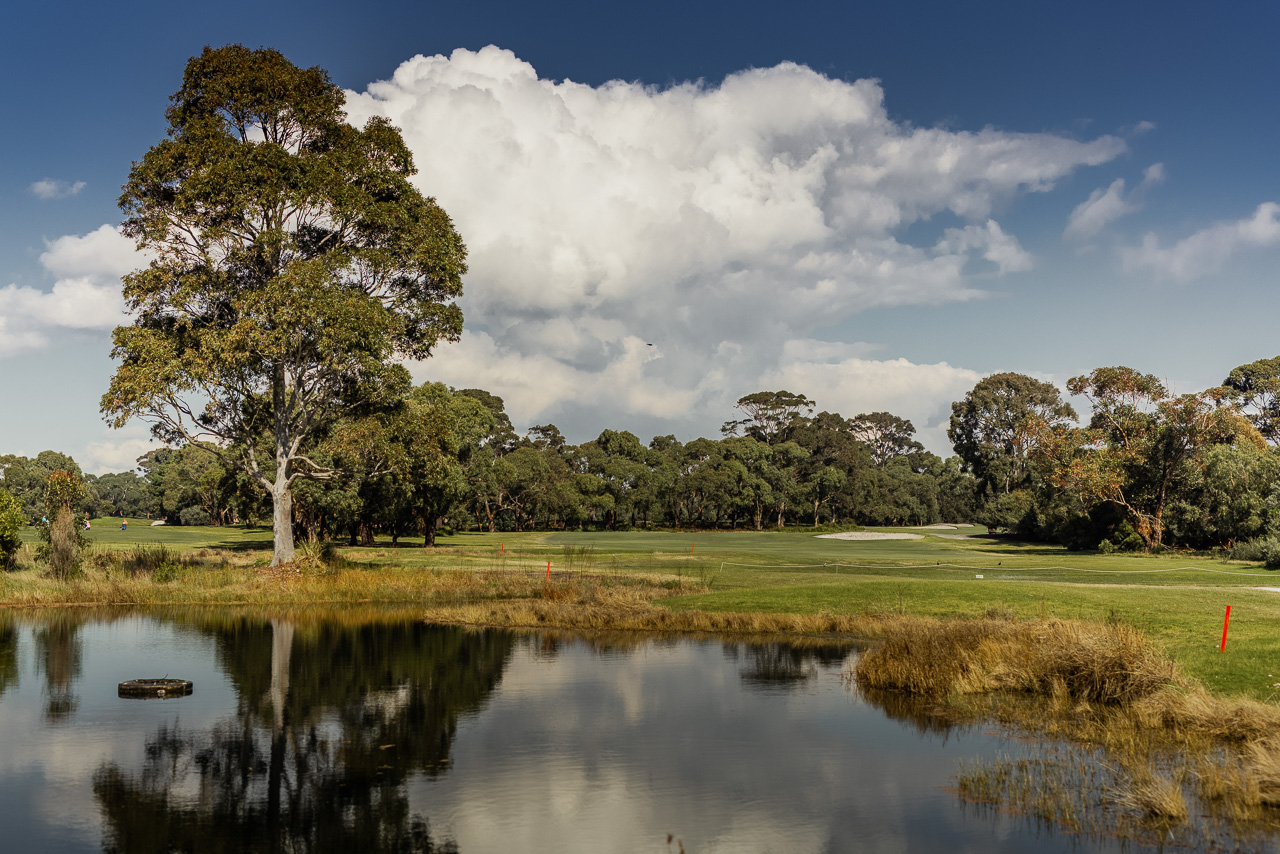
Long Island – 15th Hole
Par-4 5 13
318m 320m 357m 380m
A challenging tee shot is guarded by fairway bunkers to the right and left. Whilst there is a little more room out to the right past the bunker, it isn’t hard to run out of fairway. The second shot tends to play a little longer, due to the elevation of the green, and requires an extra club. Anything short will roll back off the front of the green.
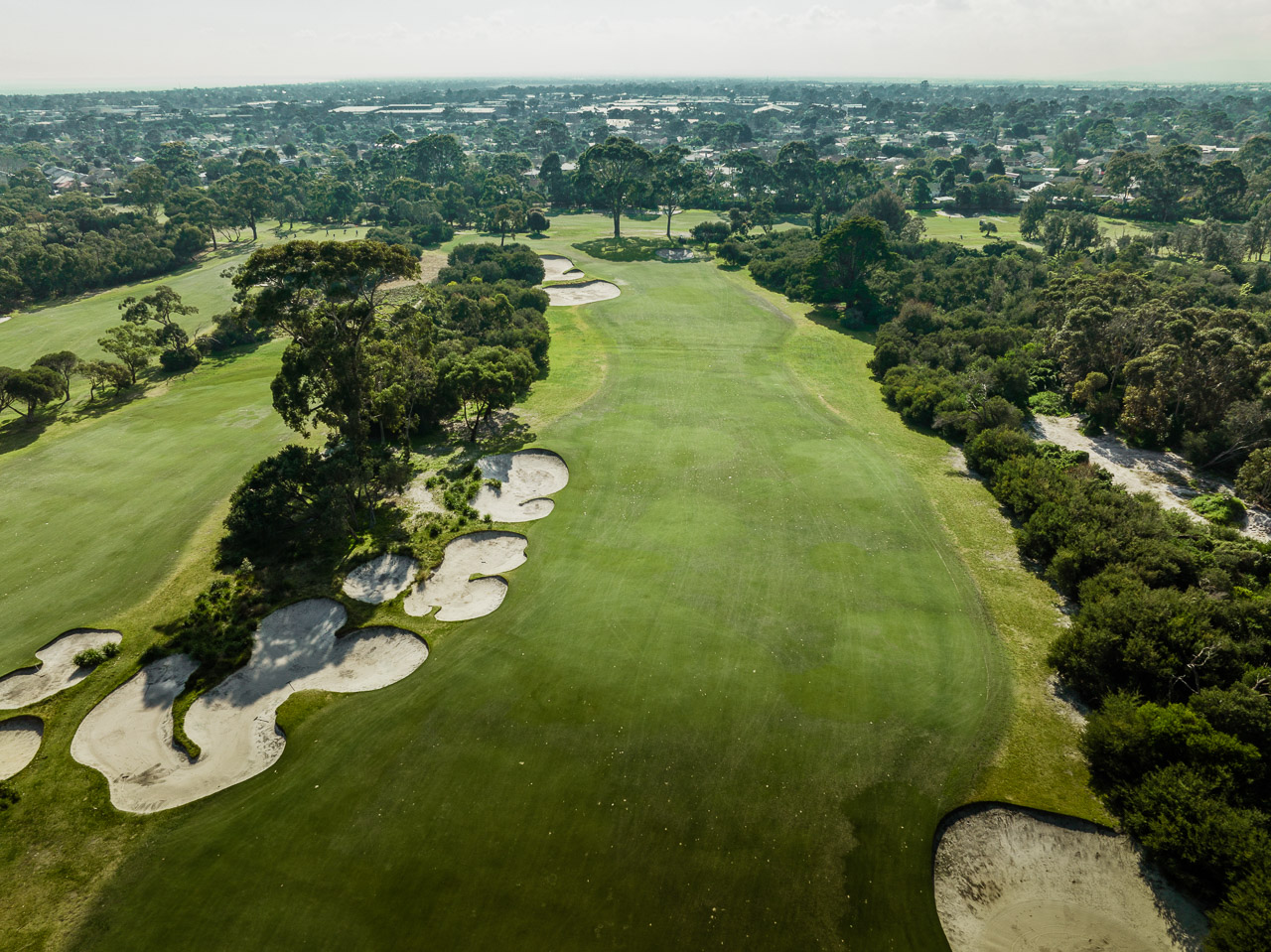
Long Island – 16th Hole
Par-4 14 4
309m 311m 321m 330m
Hole 16 is a relatively short hole and fairly straight. The green slopes sharply from back to front and will punish any shot that comes to rest above the hole. An approach to just short of the green is normally a smart play. Hitting it long on this green is not an option.
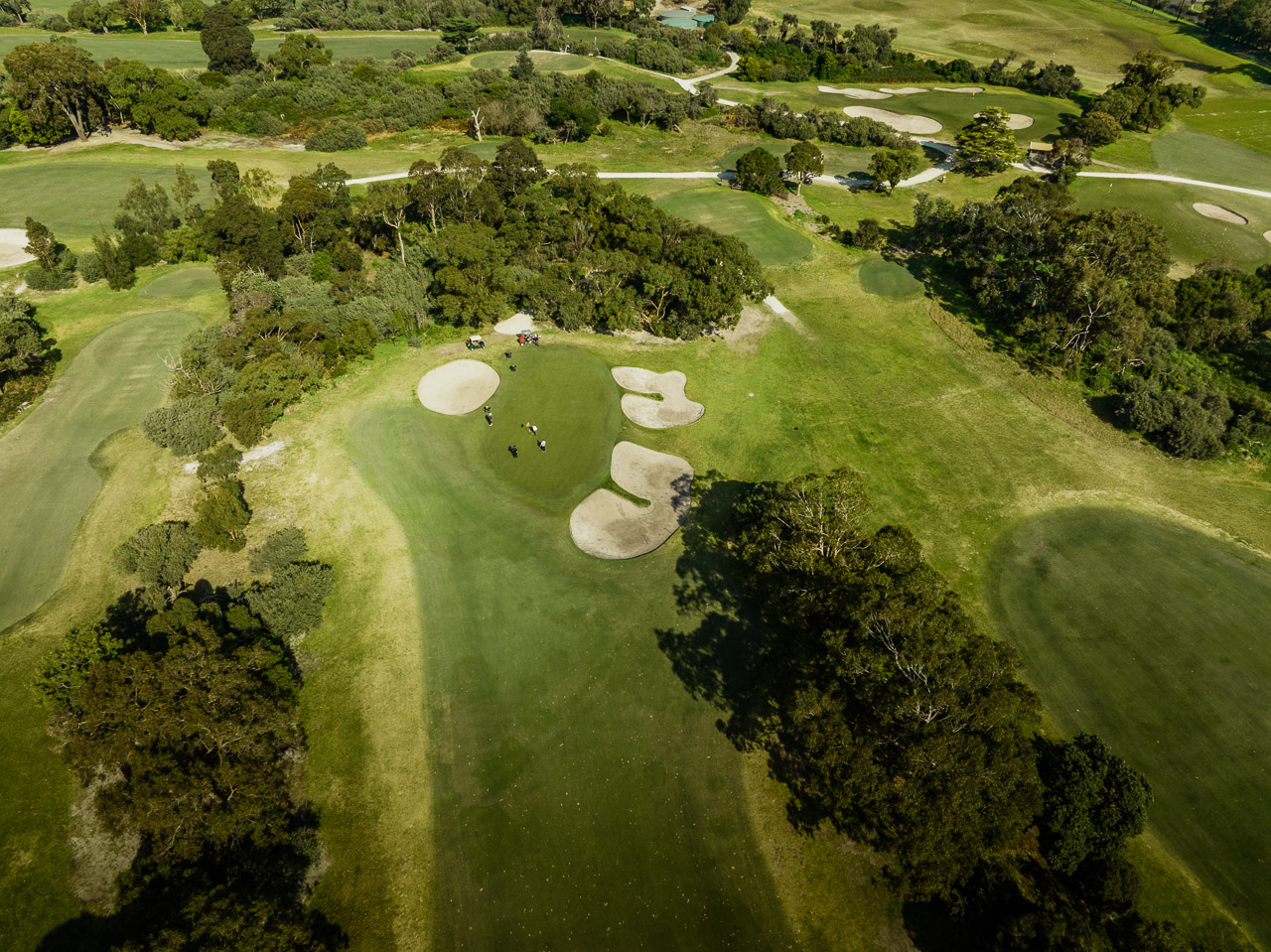
Long Island – 17th Hole
Par-4 16 17
372m 378m 377m 390m
Hole 17 is a strong par 4 which requires a good tee shot down the right hand side away from the fairway bunkers on the left second shot uphill and usually requires up to two extra clubs to reach the upside-down saucer green. An alternative approach to the hole is to lay up on the left side of the fairway to open up the angle to the green for the approach, but this makes for a fairly long approach. Not unlike the previous hole, a putt from above the hole presents danger.
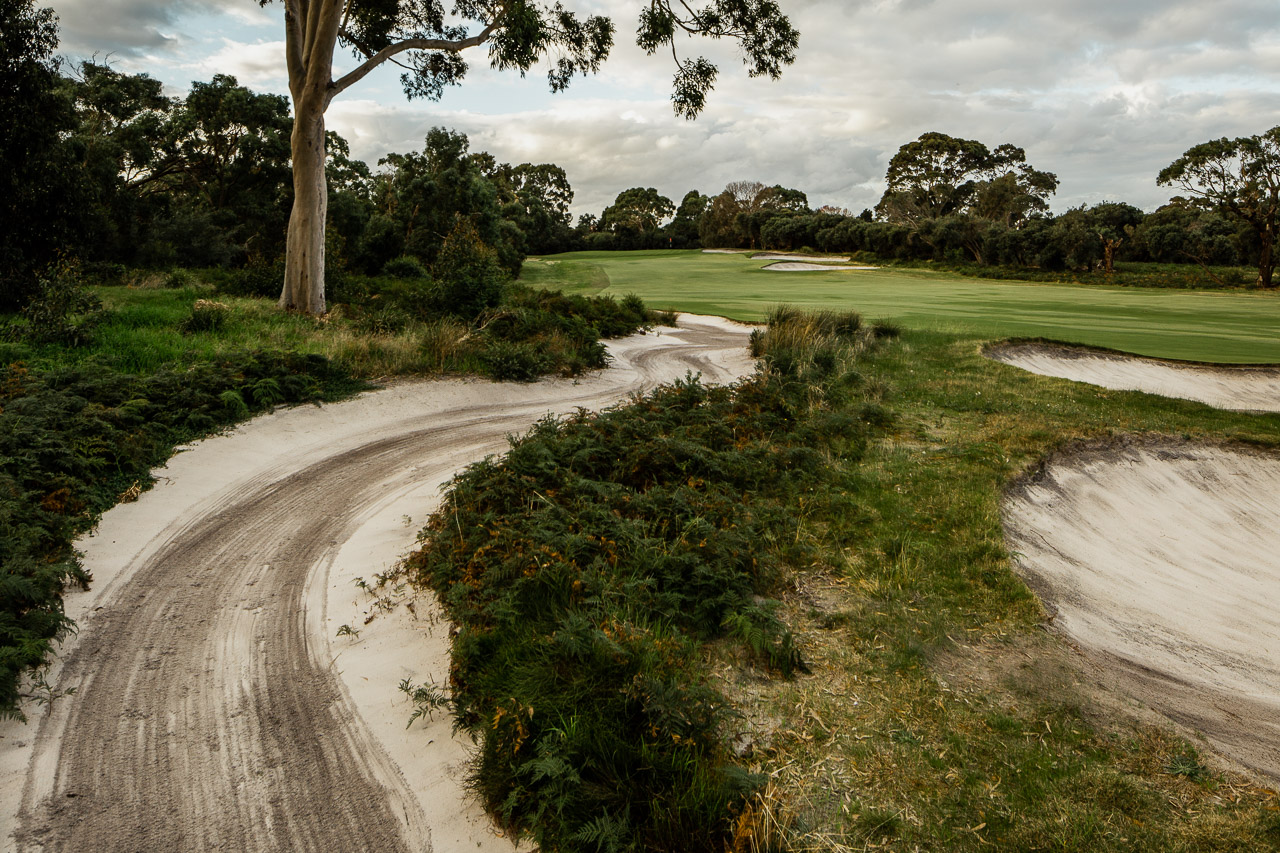
Long Island – 18th Hole
Par-4 8 9
259m 275m 360m 378m
The closing hole is a very straight par 4 with little trouble until you get near the green and the bunker on the right. Approaches coming in from the left side of the fairway will tend to present a slightly easier task. The green is relatively small and flat but does become fast in the hotter months.
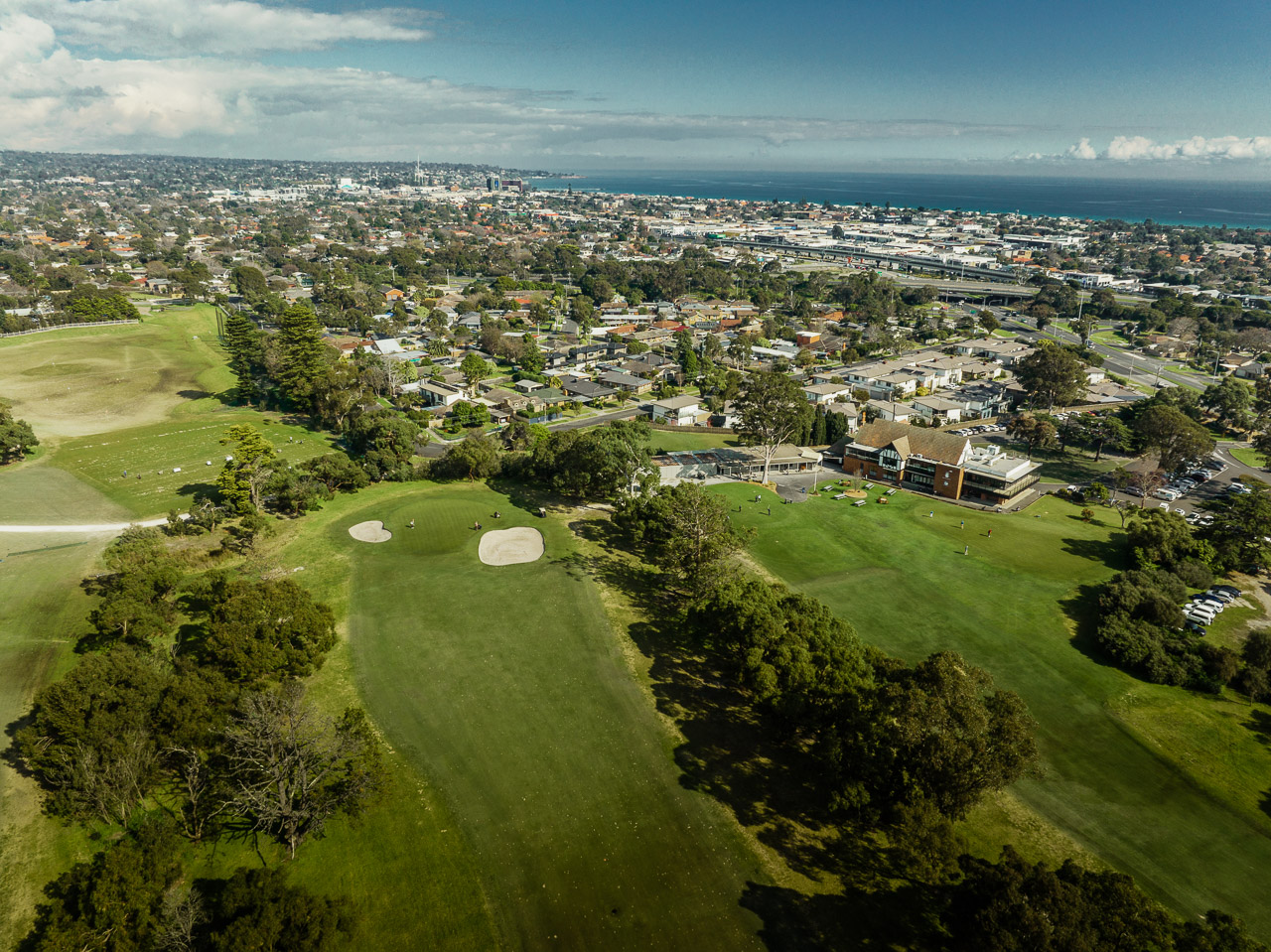
View Full Scorecard
Front Nine
| Hole | 1 | 2 | 3 | 4 | 5 | 6 | 7 | 8 | 9 | Out |
|---|---|---|---|---|---|---|---|---|---|---|
| Par | 4 | 4 | 3 | 5 | 5 | 4 | 4 | 4 | 3 | 36 |
| Burgundy Tees | 327 | 334 | 137 | 447 | 271 | 382 | 358 | 294 | 111 | 2661 |
| Silver Tees | 328 | 339 | 135 | 453 | 274 | 380 | 363 | 296 | 115 | 2683 |
| Blue Tees | 348 | 343 | 167 | 502 | 451 | 379 | 398 | 302 | 122 | 3012 |
| Black Tees | 358 | 353 | 189 | 528 | 467 | 394 | 413 | 314 | 134 | 3150 |
Back Nine
| Hole | 10 | 11 | 12 | 13 | 14 | 15 | 16 | 17 | 18 | In | Total |
|---|---|---|---|---|---|---|---|---|---|---|---|
| Par | 4 | 4 | 3 | 5 | 4 | 4 | 4 | 4 | 4 | 36 | 72 |
| Burgundy Tees | 270 | 305 | 120 | 443 | 325 | 318 | 309 | 372 | 259 | 2721 | 5382 |
| Silver Tees | 270 | 304 | 123 | 451 | 337 | 320 | 311 | 378 | 275 | 2751 | 5434 |
| Blue Tees | 338 | 326 | 131 | 467 | 343 | 357 | 321 | 377 | 360 | 3020 | 6032 |
| Black Tees | 352 | 338 | 144 | 479 | 380 | 380 | 330 | 390 | 378 | 3171 | 6321 |
Long Island – The Breakdown
Long Island – 1st Hole
Par-4 10 18
327m 328m 348m 358m
A good starting hole with a slight veer to the right and wide landing area for your drive helps to settle the first tee nerves. The second shot is where most golfers find trouble as the green has a deceptive amount of slope from right to left and is surrounded by strategic bunkering.
Long Island – 2nd Hole
Par-4 2 8
334m 339m 343m 353m
The drive needs to be directed down the right side as the slope on landing will tend to drag the ball towards the fairway bunker on the left. The second shot into the green should be played more to the left centre as anything right tends to run off the green leaving a tricky chip.
Long Island – 3rd Hole
Par-3 1 12
137m 135m 167m 189m
The 3rd is a striking par 3 surrounded by elaborate bunkering that will test the best short-game player. Depending on the pin, the stronger hitters may want to aim more to the centre of the green and allow the natural slope move the ball to the right. For those who want to take the lower route, there is an opening at the front left which will leave you in a great position to attack the flag with your next shot.
Long Island – 4th Hole
Par-5 9 3
447m 453m 502m 528m
Hole 4 is a solid par 5 where a well-struck tee shot down the middle, splitting the bunkers, amounts to an ideal start. For the majority of golfers who can’t make the green in two, the second shot should be aimed down the right side to the left of the fairway bunker. From that position, players tend to have a better angle to the green for most pin placements.

Long Island – 5th Hole
Par-5 13 14
271m 274m 451m 467m
Consecutive par 5s set up the opportunity for early gains. The fairway is lined by thick tea tree and gums on both sides, demanding a straight drive. The green is nestled in on the left and protected by trees. The ideal approach is from the right side of the fairway where bunkers will often force a shorter lay-up than is ideal. Once on the putting surface the general slope of the green is from right to left.

Long Island – 6th Hole
Par-4 11 6
382m 380m 379m 394m
Hole 6 requires a strong tee shot down the left centre of the fairway as anything to the right tends to run into the tree line. The second shot will typically require a low iron or rescue into a green that is shaped like an upside down saucer. Any shots to the left or right edges of the green tend to find their way into the greenside bunkers.

Long Island – 7th Hole
Par-4 17 10
358m 363m 398m 413m
Hole 7 is a slight dog-leg to the right with the turning point of the fairway guarded by a perfectly placed fairway bunker. Longer hitters will be able to fly the bunker, leaving them with a short iron in, while the shorter hitters should play down the left centre of the fairway, feeding back to the right off a gradual slope. Second shots into the green always tend to play a half or full club longer than would be expected as the slope from front to back is quite pronounced.

Long Island – 8th Hole
Par-4 15 1
294m 296m 302m 314m
This is a signature hole that requires a well struck tee shot down the middle of the ‘Hog’s Back’. Longer hitters may wish to play an iron as it will leave them with a better view of the green to play for their second shot. The approach shot needs to err to the right hand side of the green as it has a severe slope to the left. Club selection for the second shot must be accurate or the ball will find the bunker short and left or end up over the back of the green.

Long Island – 9th Hole
Par-3 4 16
111m 115m 122m 134m
The 9th is played from an elevated tee to a fast and sloping green that moves from right to left. From front to back the green may play as much as a 4 club variance depending on pin position and wind direction. The green is surrounded by perfectly placed bunkers that would test anyone’s short game.

Long Island – 10th Hole
Par-4 12 5
270m 270m 338m 352m
Hole 10 is a dog-leg left par 4 which requires a tee shot to either the crest of the hill in the middle or, for the really long hitters, one which takes on the corner. A draw off the tee, starting on line with centre fairway, will find its way to the flat, but anything further right is likely to run out of fairway or bring the rough/trees on the right into play. The second shot into the green requires good yardage control as you must carry the bunker to the front left of the green. The shorter hitters may opt to play to short right of the green towards the opening and have a nice angle at the flagstick with a chip or pitch. The green slopes from back to front and has a generous landing area.

Long Island – 11th Hole
Par-4 10 11
305m 304m 326m 338m
The 11th is not a long Par 4 but it does require an accurate tee shot down the middle, avoiding the fairway bunkers on the left and right. The second shot plays to a green which slopes from right to left. Playing for the right centre of the green is advised as any recovery from the back of the green can be tricky if the approach happens to go too long.

Long Island – 12th Hole
Par-3 18 2
120m 123m 131m 144m
The 12th is a challenging par 3, despite being a relatively short hole. It is surrounded by bunkers lying in wait for any mishit tee shots. On most occasions the hole tends to play into the wind and as a result many golfers end up in the traps. It always helps to take a little more club than normal when the pin is in the middle or towards the back of the green.

Long Island – 13th Hole
Par-5 6 15
443m 451m 467m 479m
Hole 13 has a very slight turn to the right and it’s only the longer hitters that can carry the bunker on the right corner. For most golfers aiming their tee shots down the left centre of the fairway will yield a better result. The second shot for the average golfers should be placed down the middle as going left brings the fairway bunkers into play. The green is relatively flat, but requires good distance control with the approach shot.

Long Island – 14th Hole
Par-4 3 7
325m 337m 343m 380m
Hole 14 is a slight dog-leg from left to right where the average golfers is advised to hit down the left side of the fairway and leave the carry of the bunker on the right to the bigger hitters. The green is guarded by bunkers on the left and right, but still has a generous landing space towards the front. The green itself is another upside down saucer so distance control is critical for those seeking par.

Long Island – 15th Hole
Par-4 5 13
318m 320m 357m 380m
A challenging tee shot is guarded by fairway bunkers to the right and left. Whilst there is a little more room out to the right past the bunker, it isn’t hard to run out of fairway. The second shot tends to play a little longer, due to the elevation of the green, and requires an extra club. Anything short will roll back off the front of the green.

Long Island – 16th Hole
Par-4 14 4
309m 311m 321m 330m
Hole 16 is a relatively short hole and fairly straight. The green slopes sharply from back to front and . will punish any shot that comes to rest above the hole. An approach to just short of the green is normally a smart play Hitting it long on this green long is not an option.

Long Island – 17th Hole
Par-4 16 17
372m 378m 377m 390m
Hole 17 is a strong par 4 which requires a good tee shot down the right hand side away from the fairway bunkers on the left second shot uphill and usually requires up to two extra clubs to reach the upside-down saucer green. An alternative approach to the hole is to lay up on the left side of the fairway to open up the angle to the green for the approach, but this makes for a fairly long approach. Not unlike the previous hole, a putt from above the hole presents danger.

Long Island – 18th Hole
Par-4 8 9
259m 275m 360m 378m
The closing hole is a very straight par 4 with little trouble until you get near the green and the bunker on the right. Approaches coming in from the left side of the fairway will tend to present a slightly easier task. The green is relatively small and flat but does become fast in the hotter months.



